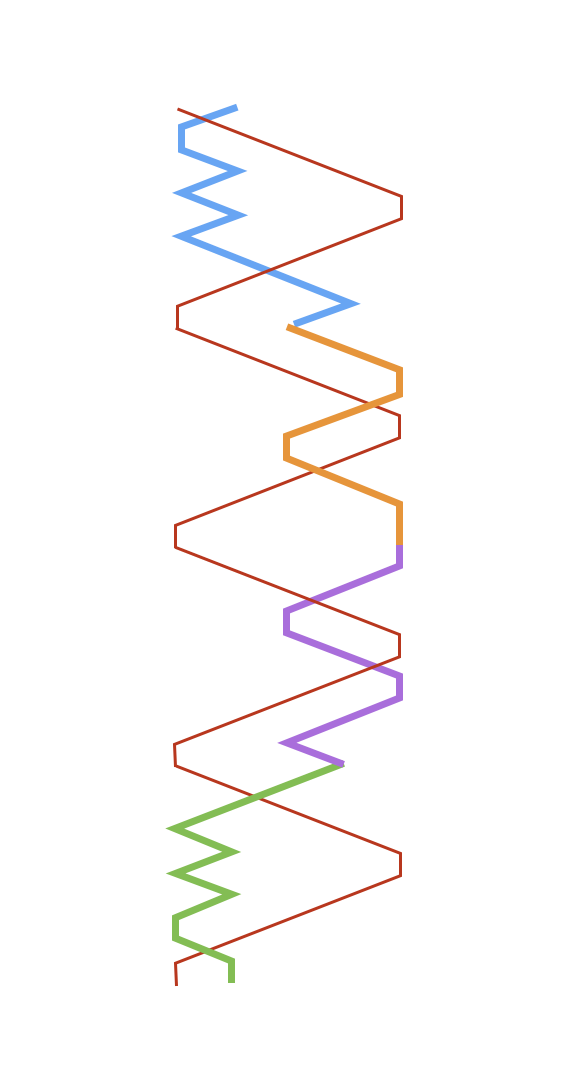
The Line...
The method shown opposite is St Simon’s Bob Doubles.
At a glance, it looks much more complex than Plain Bob but is actually very closely related and therefore makes a good starting point for those who want to move on to the next stage…
Because it is so closely related, the work cycle is also similar. The same taks, but done in reverse order….
Dodge 3-4 Up.
4 blows behind.
Dodge 4-3 Down.
Making 2nds.
However, one obvious difference is the fact the line progressively moves between front to back only once… following a meandering pathway.
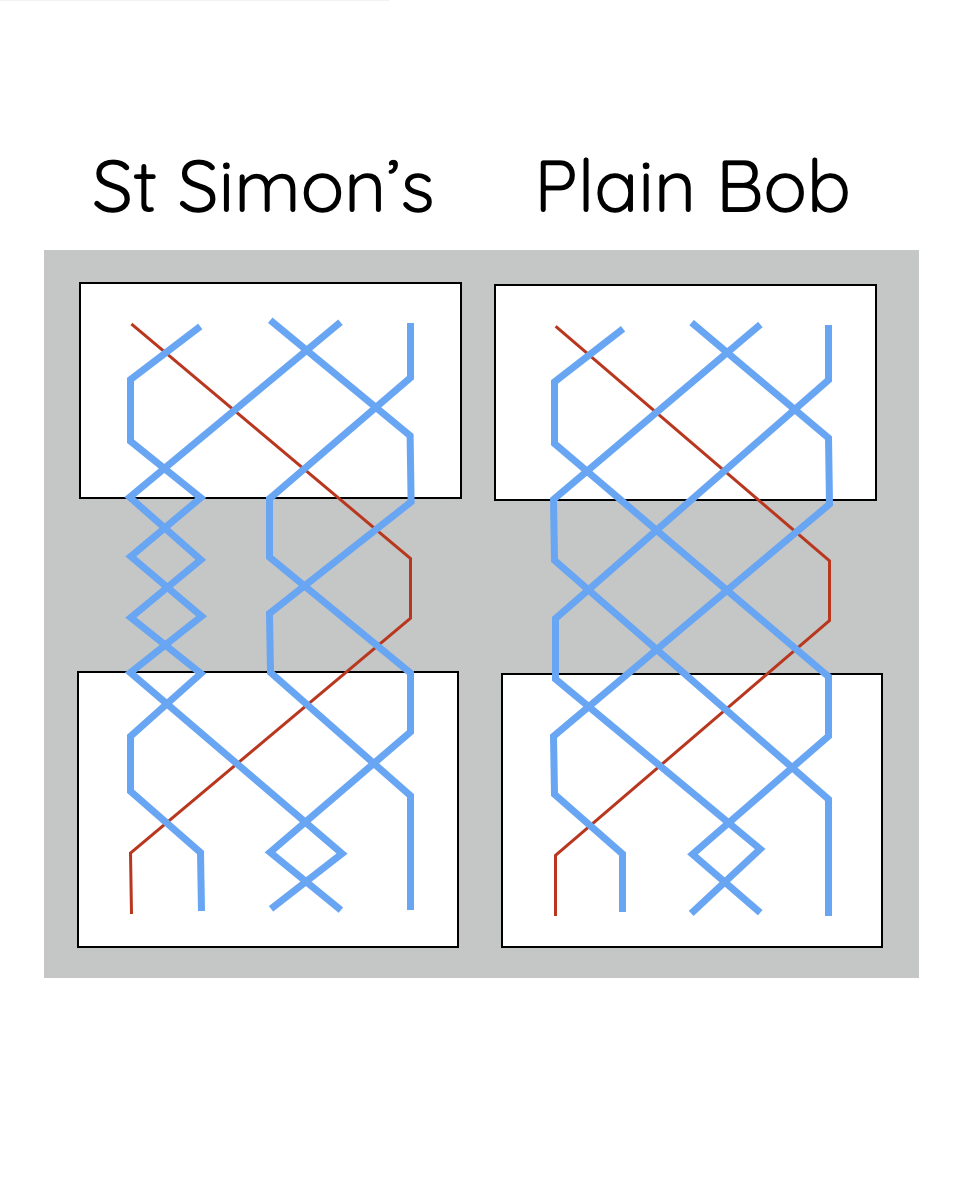
The difference from Plain Bob...
If you look closely at the pattern in St Simon’s you can see a lot of similarities with Plain Bob…
The first three and last four changes in each lead are exactly the same (highlighted in white).
It means the starts are also the same a Plain Bob (Plain Hunt)….
2 will lead..
4 hunts to the front..
5 will lie for one blow then hunt down.
3 will hunt up..
……so it is only 2 of the middle 3 changes that are different.
This helps explain why the work cycle is the same…
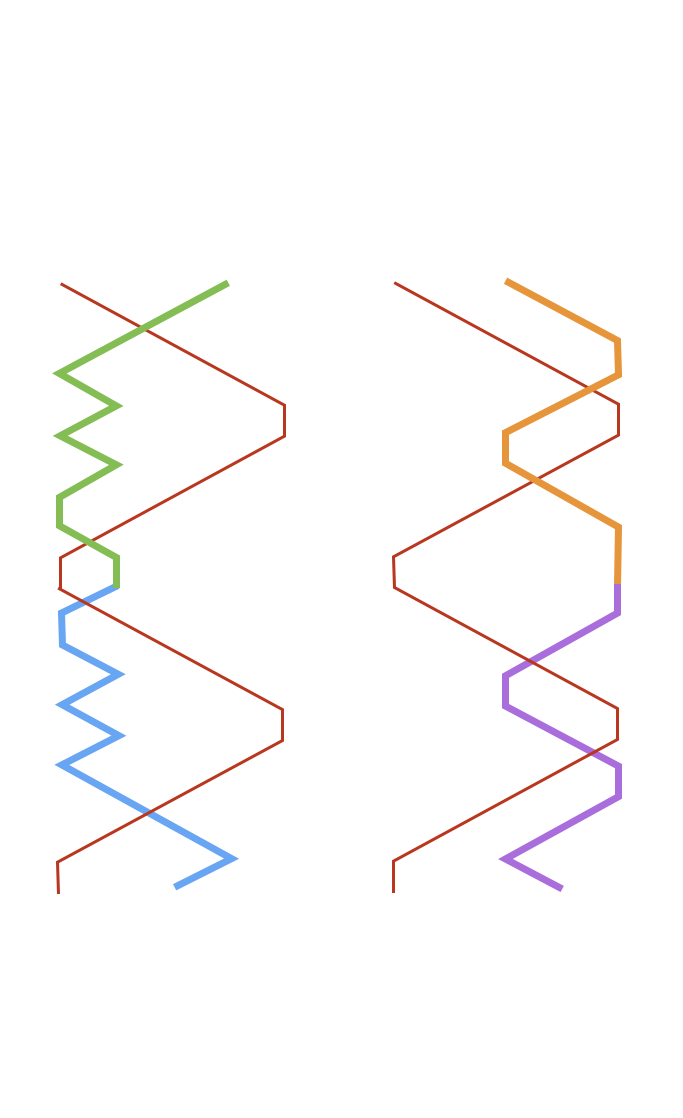
Front work and Back work..
In this diagram, we have split the line into two equal halves…
If you look, you will see half of the method is spent at the front and half at the back…
The front work is completed by 4th and 2nd place bells….
4th place bell moves from back work to front work, by hunting down and doing 2 dodges with 2nd place bell, before leading full and making 2nds at the lead end.
2nds place bell then takes over by leading and doing a double dodge with 4th place bell, before hunting out to a 3-4 up dodge and becoming 3rd place bell.
The transition from front to back is at this dodge…
The back work consists of Plain Hunt between 3rd and 5th place and is completed by 3rd and 5th place bells.
3rd place bell, starts by hunting up to the back, but on it return, makes thirds and then goes back up again to do 4 blows behind.
5th place bell takes over and hunts to thirds and back, before hunting down to a 4-3 down dodge… at which point it transitions to the front work and becomes 4th place bell.

The Treble...
The treble is always very important and it is not different with these methods…
Because the bells are either doing back or front work, the treble will pass bells in a different order on the way up and down.
On the way up – a,b, c,d,
The return order – c,d, a,b.
This information will be useful to learner who has limited rope site, but should not cause any issues for anyone else.
Much more important is the fact that each bell will pass the treble as per Plain Bob… so this will help an experienced ringer to navigate if they momentarily get distracted.
If you pass the treble in 4-5 (i.e. last) then you are about to dodge 4-3 down, become 4th place bell and start front work.
It you pass the treble in 3-4, then you are about to make 4 blows behind.
If you pass the treble in 2-3, you are about to dodge 3-4 up, become 3rd place bell and start the back work.
If you pass the treble in 1-2 you are making 2nds!

Bobs...
Bobs are the same as Plain Bob.
Run in, (plain hunt instead of 4-3 down)… 2nd place bell.
Run Out (plain hunt instead of seconds)… 3rd place bell.
Make 4ths (the bob instead of 3-4 up). 4th place bell.
4 blows behind is unaffected… 5th place bell.
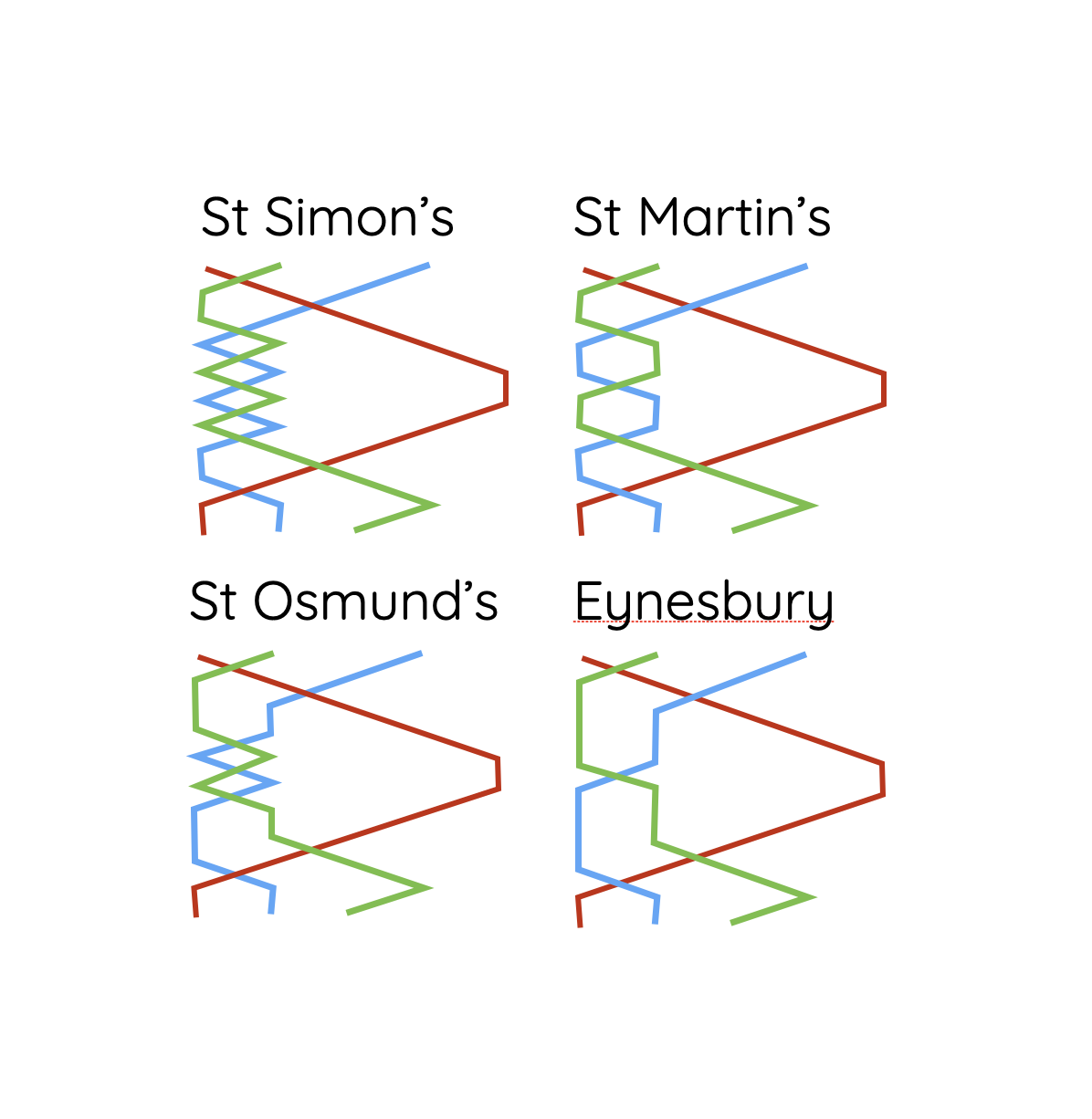
Changing Places...
In the St Simon’s group, there are 4 possible front works that we can use.
If the bells switch on all three rows which are different from plain bob, we get St Simon’s the double dodge.
If the switch is only on the middle row, it will be St Martin’s, and we get places.
The other two, deviate a tiny bit more from Plain Bob, by not switching on the change before and the change after the central section that its different.
St Osmund’s is similar to St Simon’s in the central section, but because of the extra place before and after, it consists of 3 blows lead, a dodge and an extra blow in seconds’… whihc feels wrong… making it by far the most tricky to ring.
Eynsbury is similar to St Martin’s, but also has the extra place before and after, so consists of 4 blows in lead and 2 in seconds… making it the easiest to both ring and remember.
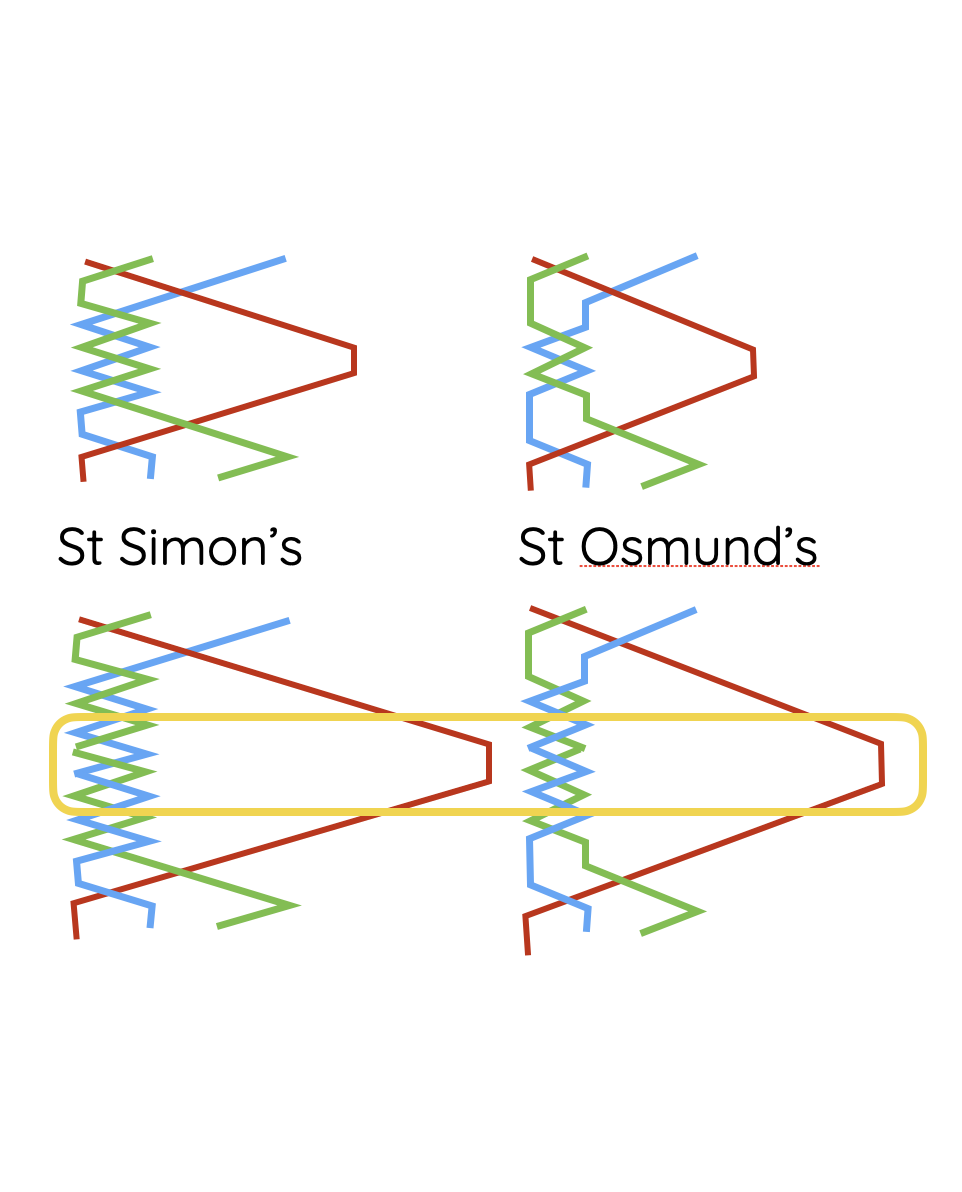
Extending to higher numbers...
Extending the St Simon’s group to Triples or Caters is done by adding in extra dodges in the middle portion.
Because we have to accommodate two more bells, we need to extend the central section which is not ‘Plain Bob’.
We do this by adding in two more dodges…
So St Simon’s will now have 4 dodges instead of 2.
St Osmund’s will keep the three blows in lead and the last extra blow in second’s, but will now have three dodges in-between.
The extension to caters or cinques will also work the same way… so 4 or 6 extra dodges will be added to cope with the 4 or 6 extra bells over and above those in doubles.
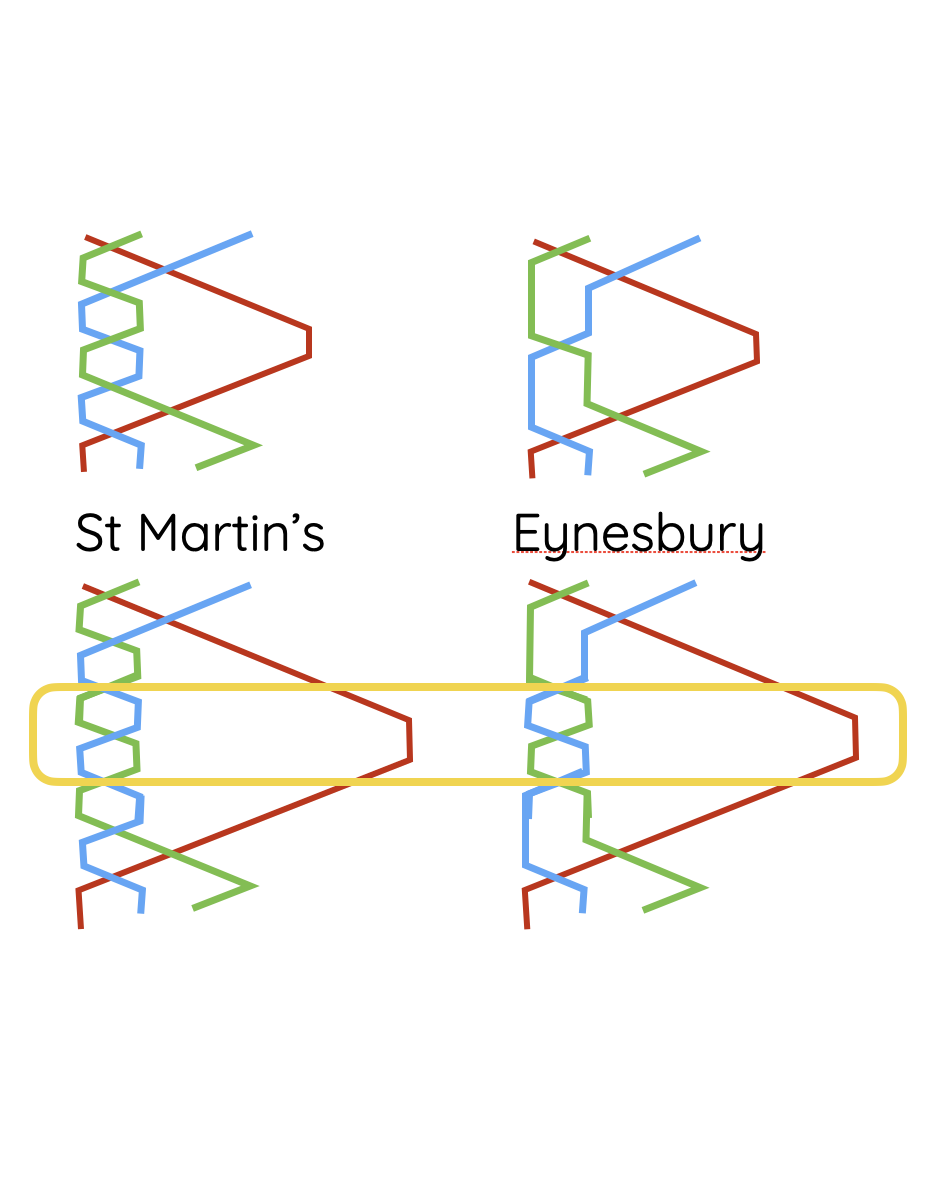
More on extensions...
The triples extension of St Martin’s and Eyensbury is similar and involves adding 2 more places… one for each extra bell.
So St Martins, now has 2 sets of places…
…and Eynesbury has the extra places put in between the 4 blows of lead and 3 blows in seconds.
The extension to caters and cinques involves adding 4 or 6 places, one for each extra bell.
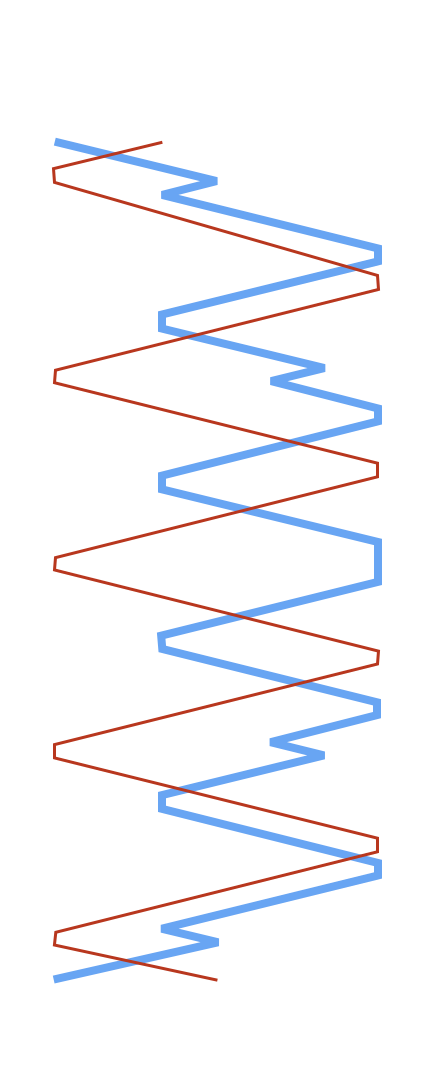
Extending the back work...
The back work extension for all the t simon’s group is very much based on Plain Bob…
In Triples, the bells now hunt from 3rds to 7ths and back…
Instead of going back and forth 3 times, it is now extended to 5 times, to accommodate the extra 2 bells.
Just like Plain Bob, we add in a 5-6 up dodge and and 6-5 down dodge.
The order remains the reverse of plain Bob…
so 3-4 up marks the beginning of the back work followed by:-
5-6 up (become 5th place bell)
four blows behind (long 7ths) (become 7th place bell)
6-5 down (become 6th place bell)
4-3 down (beceme 4th place bell and start the front work).
Extending to Caters is similar and adds a further 2 hunts from 3rds up to the last place and back.
It also requires two extra dodges in 7-8 up and 8-7 down, placed similarly.
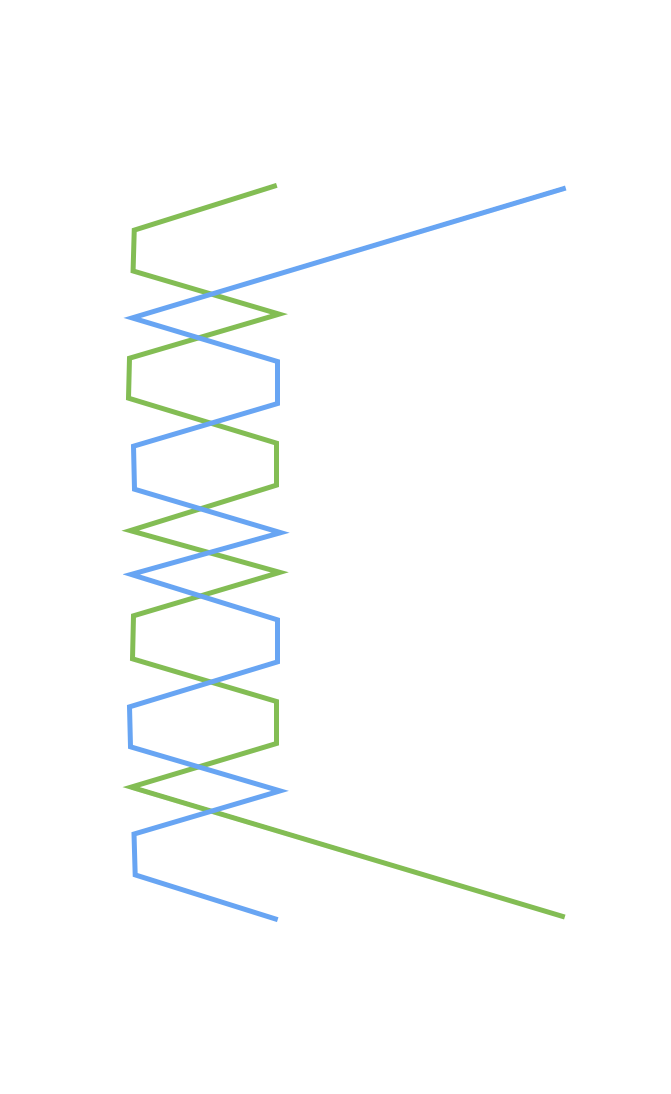
More Permutations...
There are only 4 front works possible in doubles.
In triples the 4 extra blows added to accommodate the extra bells multiples the possibilities by another factor of 4…. so 16 different possibilities.
At Caters, it multiples by yet another factor of 4, so a total of 64 possibilities.
One of those possibilities is called Pebworth Bob Caters and its front work is shown opposite… but it is still effectively part of the St Simon’s group of methods.
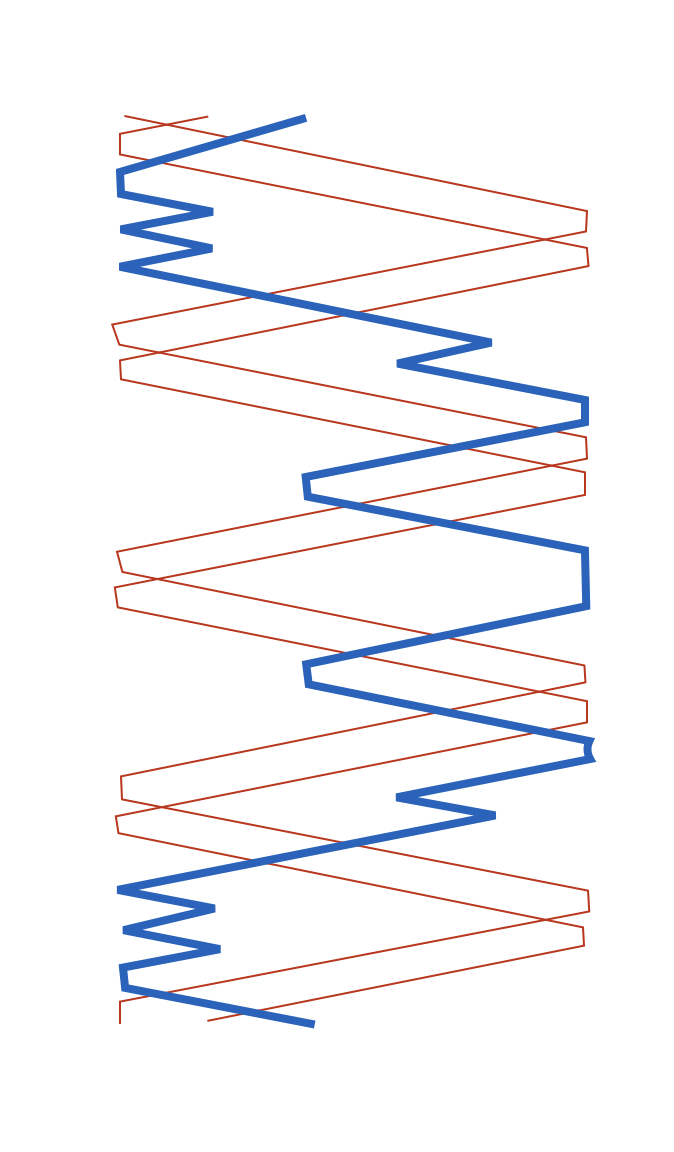
Even bell versions...
If you have looked at the St Clement’s College Bob page… you will know that the even bell version of St Simon’s is called St Clement’s… So why?
For some reason known only unto the Central Council… St Simon’s Minor/Major, etc., has two hunt bells like Grandsire… and with all the complications that raises.
It is likely, that this was tried and named before the Central Council had set rules, which probably forced their decisions!
So the line looks identical to St Simon’s Doubles except it now involves making 3rd’s instead of 2nd’s at the lead end. Dodging in 4-5 instead of 3-4 and turning around in 4th and 6th place instead of 3rd and 5th during the back work…
It will use Grandsire Bob’s and singles too, just to add complication!
It is not widely rung!
In the links below we have selected the CCCBR Library’s page for St Simon’s Caters. If you go to the trivial variations at the bottom of the page, you will find our own Pebworth Bob Caters.
The second link is to St Simon’s Triples from Blue Line, but if you search, all the other variants are also there.
